All photos © Colin Rossiter
Meet WildArk’s newest contributor Colin Rossiter who will be sharing his adventures in researching “Grizzly” bears in the wilds of Knights Inlet – a saltwater inlet surrounded by snow-capped mountains and home to an abundance of wildlife including humpback whales, orcas, wolves, Bald eagles, dolphin and seals, in Glendale Cove, BC, Canada over the coming months.
Colin has a special interest in brown bears or “grizzly” bears as they are better known and is currently studying his Masters in Applied Science (Wildlife/ Behavioural Ecology) at Central Queensland University.
He will spend five months each year (June - October) as part of a research team under the guidance of Professor Owen Nevin and Dr Melanie Clapham, studying the effects of ecotourism on “grizzly” bear behaviour in in this biologically rich ecosystem.
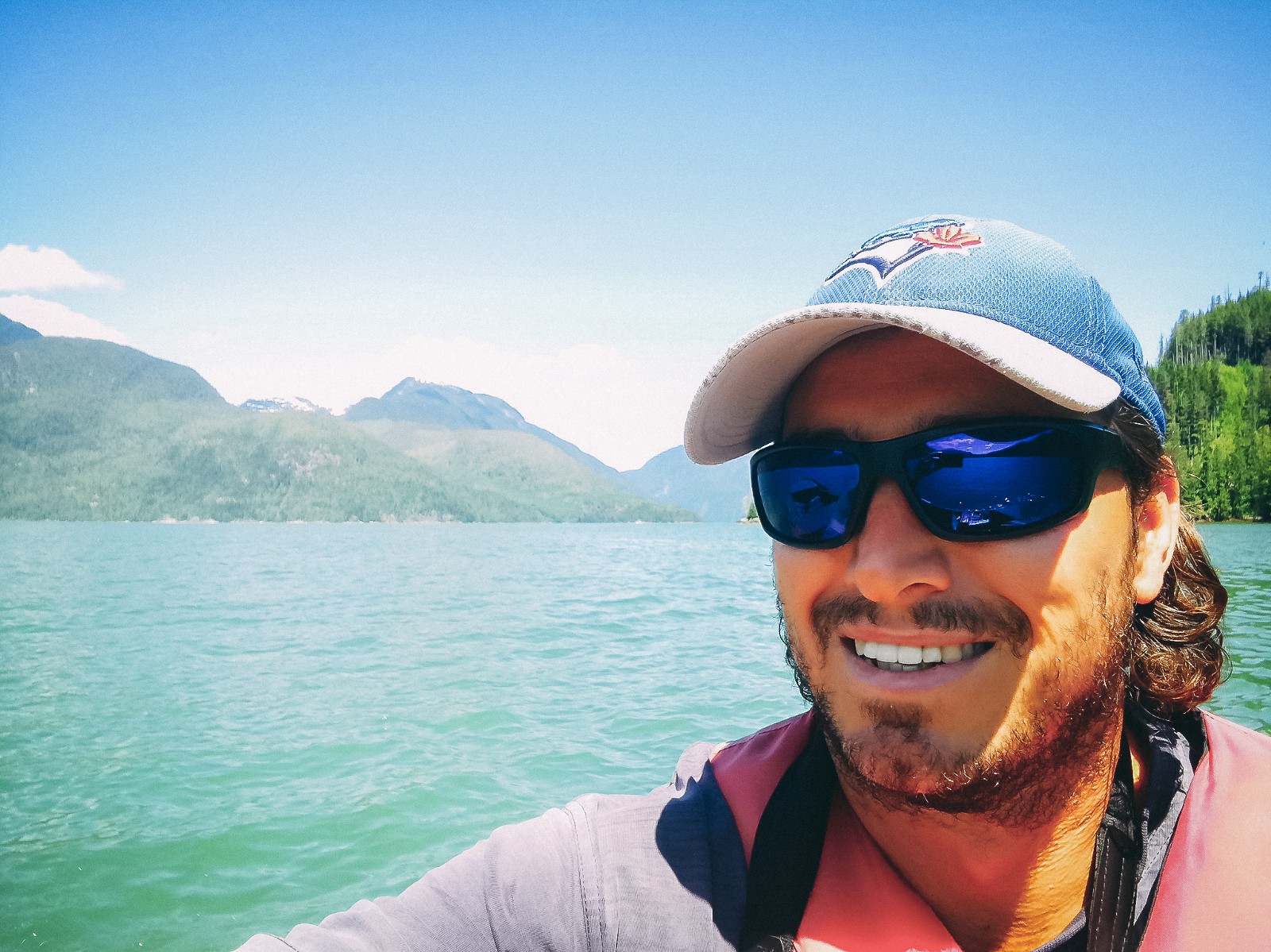
Colin enjoying the BC wilderness.
We caught up with Colin to find out more about his upcoming project…
WildArk: Why is this research important?
Colin: Early research conducted from 1998–2002 revealed temporal avoidance by large male bears at feeding sites, when humans were present. Avoidance by these big males, resulted in more regular visits by females and cubs who took refuge by accessing feeding sites more effectively when people were present. A net benefit to the population was recorded which was a rare example of ecotourism having a positive impact on wildlife populations.
This new project gives us the unique opportunity to compare the behaviour of one generation of brown bears to another in the same location, and will give us insight into potential long-term impacts of ecotourism and brown bear viewing.
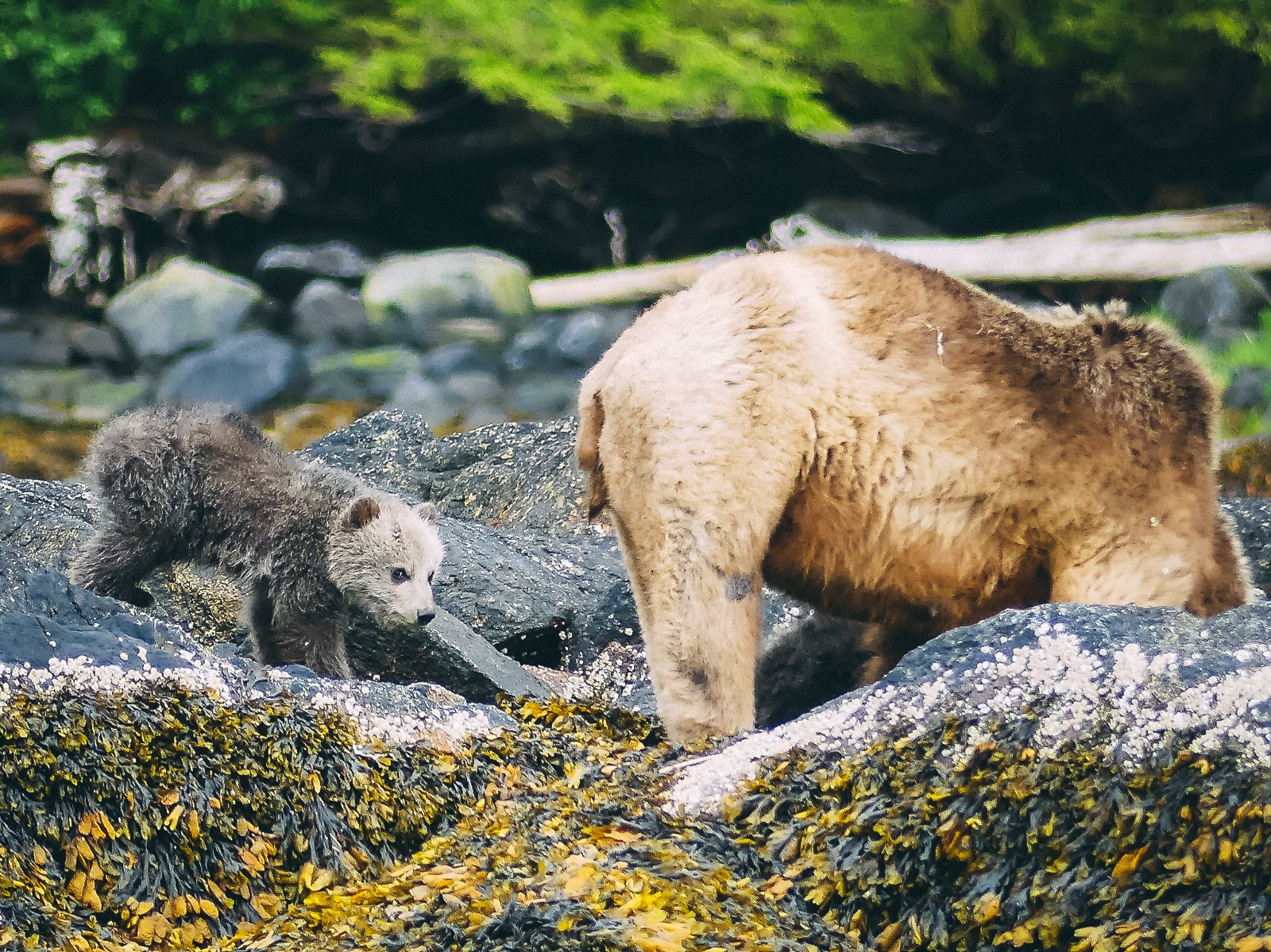
Mum and cub foraging for food in the inlet.
WildArk: Tell us more about Glendale Cove?
Colin: Glendale Cove is at about the halfway point of Knight Inlet (which lies within the Pacific Ranges and is at the southernmost end of the Coast Mountains). It is situated at the southern end of the Great Bear Rainforest, which is the largest intact temperate rainforest left in the world.
Biologically, this ecosystem includes biodiversity hotspots like estuaries and is important bear habitat due to a wide variety of food sources, including sedge meadows, intertidal foraging (mussels, gunnel fish etc.), berries in the forest and salmon. Although the home range of bears is thought to be quite vast, the location and readily available food sources make it a highly visited estuary by the surrounding brown bear population.
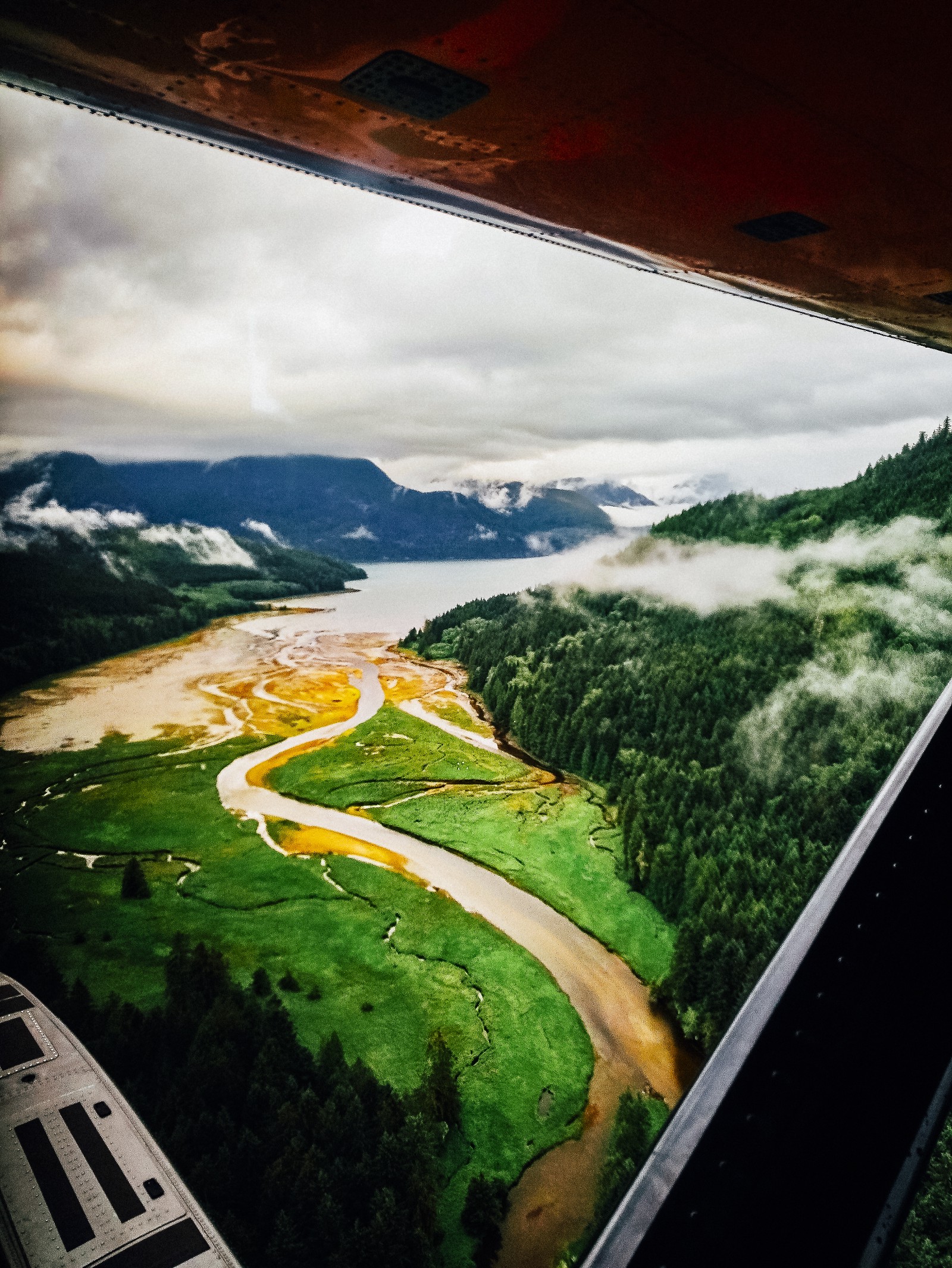
View over Glendale Cove, the area in which Colin will be doing his research.
WildArk: How will you be conducting your research?
Colin: We will focus on bear behaviour under viewing and non-viewing conditions. This will include observations from elevated viewing stands during the salmon run (Autumn — end of October). I will be recording bear behaviour, ID and feeding patterns by staying on the stands during various times of day, including morning, afternoon, evening and overnight while viewing groups move in and out.
A network of trail cameras and hair traps are spread out through the forest along bear trails and nearby rub trees. These form part of Dr Melanie Clapham’s Brown Bear ID Project to capture images for a facial recognition program and serve as an important method in identifying individual bears that frequent the area. Hair samples can then be cross referenced with facial ID to create a database of the genetic make up of the population. These are important in understanding genetic diversity amongst the bears that pass through the area and may reside in the wider region.
WildArk: Why Grizzly Bears?
Colin: The distribution of brown bears or ‘Grizzlies’, has decreased dramatically over a number of years. Population levels have dropped due to habitat loss, degradation and trophy hunting, and together with the high mortality rate of cubs and a naturally slow recruitment rate, there is an increasing need to preserve what is here now for the future. In the past brown bears in North America had been nearly hunted to extinction, so they need continuous work not only to maintain numbers, but to become a healthy population.
Personally, I believe in helping those that cannot help themselves and I’m hoping I can add something to the current research to increase understanding in this area. After sitting quietly watching bears go about their business, it becomes apparent that they are individuals, with individual characters, that have a great awareness of their environment and are very susceptible to change.
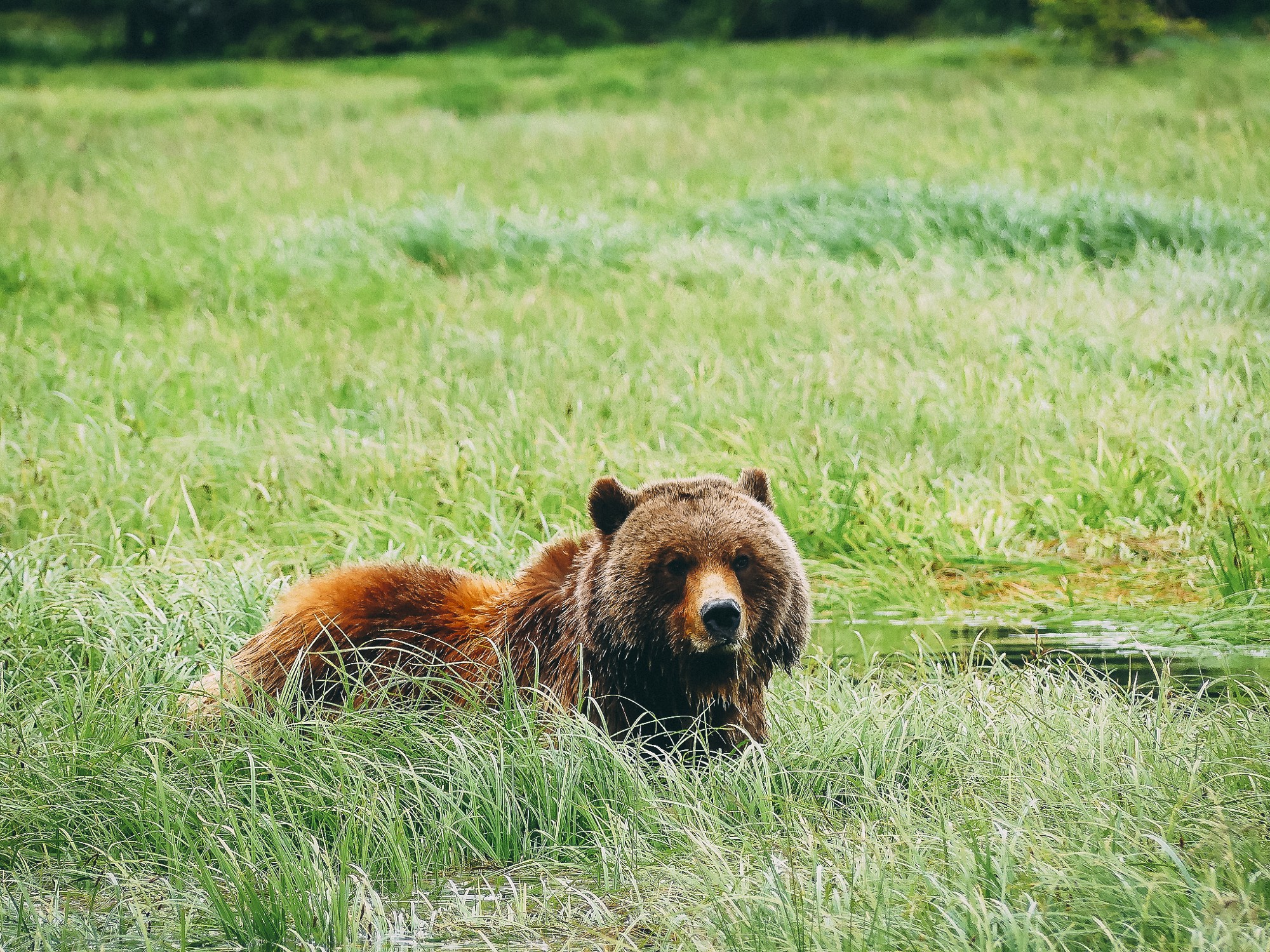
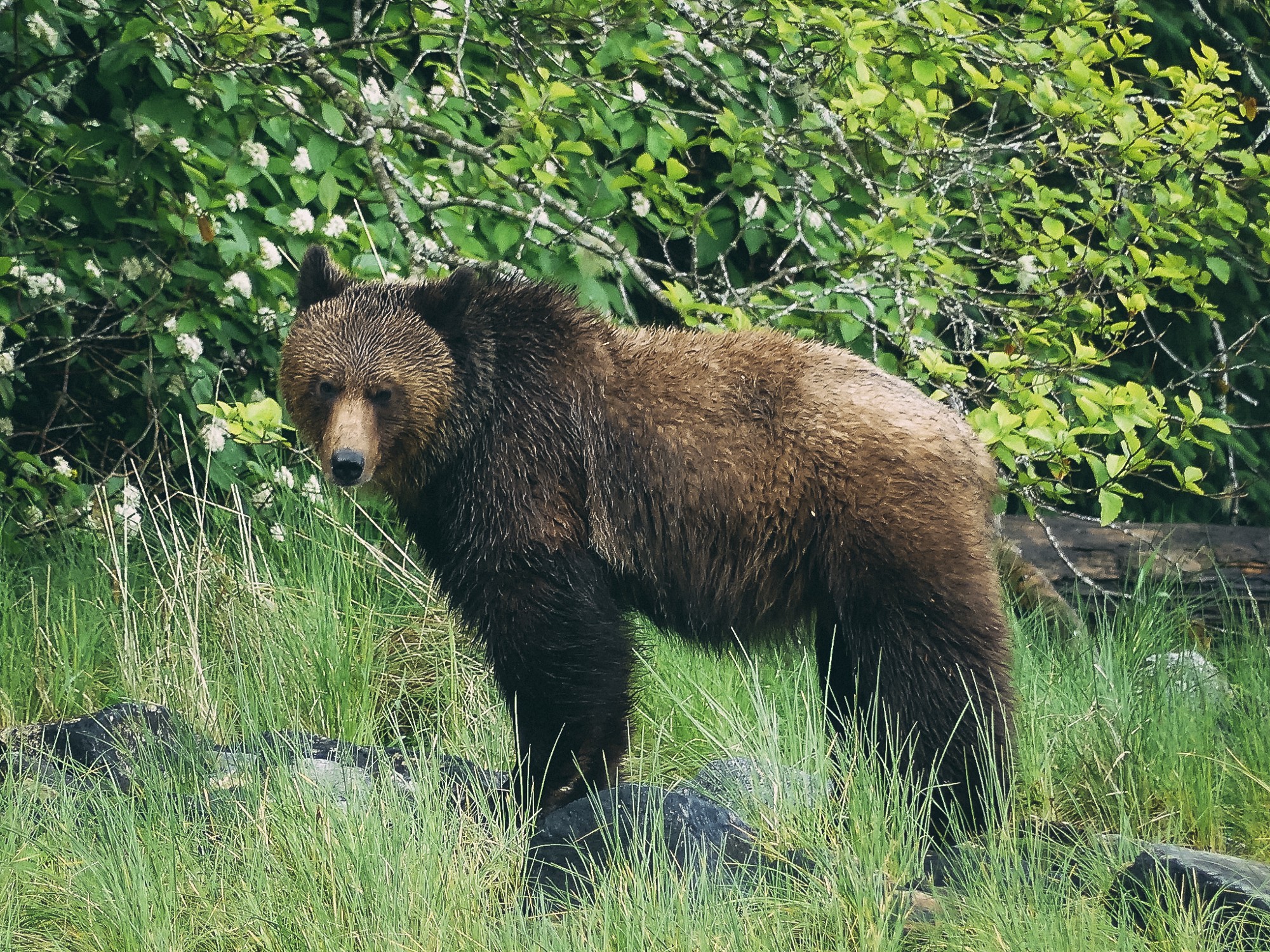
Grizzly Bears in Knights Inlet.
WildArk: What kinds of conservation projects are in place in this area to protect them?
Colin: Knight Inlet Lodge has taken environmental stewardship seriously since commencing operations, running projects on both brown bears and salmon in the area. Salmon numbers had decreased to such a level that the Department of Fisheries and Oceans Canada (DFO) installed an artificial spawning channel in the Glendale River to support and increase salmon numbers. Knight Inlet Lodge took over running and maintenance of the spawning channel as it was found to be a critical junction as a prime feeding site for the bears in the region. At the request of Knight Inlet Lodge, Professor Barrie Gilbert and then graduate student Owen Nevin commenced long-term behavioural studies into the brown bear population in the area.
More recent and current research projects by Dr Melanie Clapham and John Kitchin include scent marking and the importance of rub trees, genetic monitoring of the population, trail camera and photo ID work to establish a database for the Brown Bear ID Project.
WildArk: Describe your average day?
Colin: At present my average day begins by conducting bear counts within the estuary at Glendale Cove. These are conducted from a boat and involve traversing the cove recording bear presence. This is repeated at regular intervals throughout the day.
When required, Melanie and I check the network of trail cameras, changing memory cards and batteries. Many of these cameras are situated along well-worn brown bear trails through the forest and are placed to capture footage of passing bears and scent marking activity at rub trees.
As we move into Autumn, I will begin my data collection at the spawning channel on the elevated viewing stands and complete the field work by the end of October. This schedule requires me to make observations during all times of the day, working on a rotating roster to capture morning, afternoon, evening and overnight behaviours. At times, I will be on the stands with viewing groups present and at others I will be alone in non-viewing times and for overnight stays.
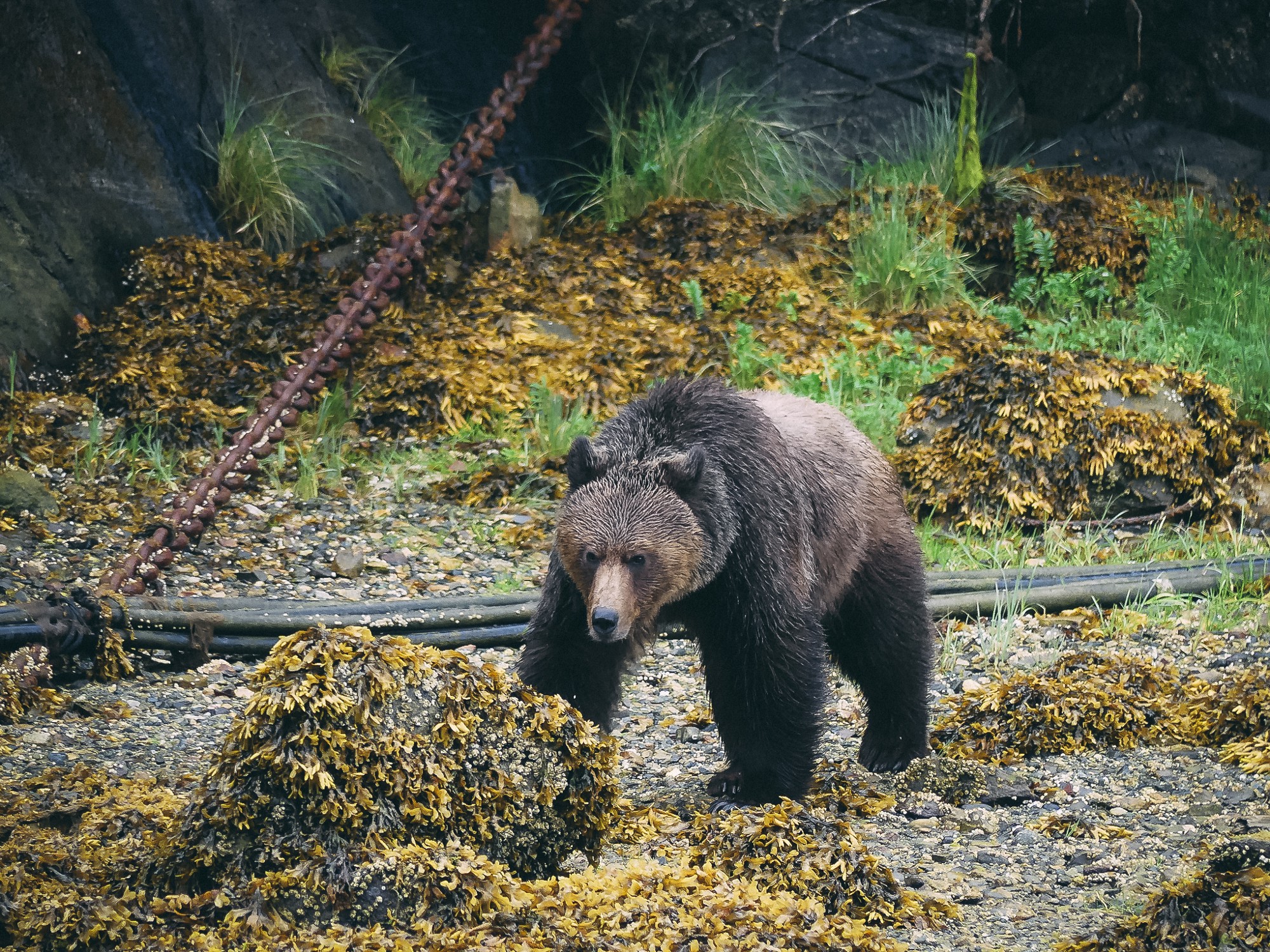
WildArk: What kind of equipment do you need to do your research?
Colin: Temperatures during the season range from 0 to 30 degrees celsius, with an annual rainfall of approximately 6 metres. This means full waterproofing of everything, including my equipment and myself is required. Full personal protective equipment is required due to the remote location and the use of a variety of vehicles such as boats, trucks, kayaks and cars. Other gear includes binoculars, waterproof bags, laptops, sealed cases and my trusty old camera.
WildArk: What are you looking forward to most?
Colin:More field work and data collection! I will be spending as much time in the field to extend research in the area to help us better understand Grizzly bears. It is hoped that the outcomes go some way to ensuring better protection and management of Grizzly bears and their habitat.
Learn more about Colin’s research: CQ University
